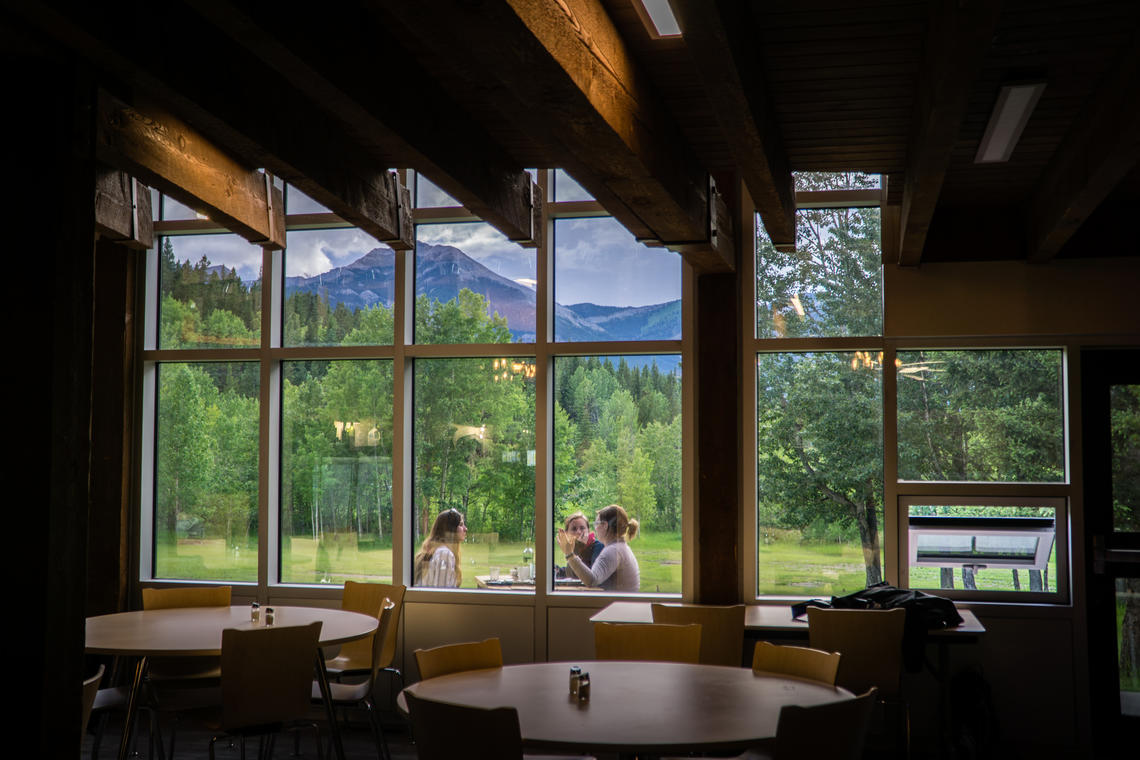Sept. 11, 2019
PhD students from three countries produce two academic research papers in just two weeks

For two weeks in July, a group of PhD students assembled for a research retreat in the Rocky Mountains, complete with someone available to prepare all of their meals, a team of collaborators at the ready, and a set of raw data waiting to be analyzed. With the added “bonus” of having no cell phone reception, the group applied their collective focus, and ended up producing two academic research papers by the end of the fortnight.
Experiential learning in its highest form
The Canada-Norway Sounding Rocket (CaNoRock) STEP PhD workshop is an offshoot of a collaboration between the University of Oslo and three Canadian universities (the University of Calgary, the University of Alberta, and the University of Saskatchewan), which originated in 2009. Funded by the Norwegian Centre for International Cooperation in Education, the program is specifically designed to bring students together from different countries to a secluded environment where, under the guidance of dedicated faculty mentors, they can focus their energies and produce a scientific paper worthy of publication.
This year, the venue was the Barrier Lake Field Station, owned and operated by the University of Calgary, and nestled in the Kananaskis Valley. Situated at the foot of the Rocky Mountains, the facility was the perfect spot to get research done without distraction.

The serene location proved the perfect spot to collaborate on, and produce, two academic papers.
Jiashu Wu
Graduate students from the collaborating universities were joined this summer by one student from UNIS (The University Centre in Svalbard, Norway), as well as participants from the University of Iowa.
Student-led data analysis and manuscript preparation offers valuable hands-on experience
Data was pre-selected for analysis by workshop students, and was provided from the European Space Agency mission SWARM, a constellation of three identical satellites carrying identical instrumentation that measures magnetic signals from the earth's core, mantle crust, and oceans. The University of Calgary provided the Electric Field Instruments (EFI) that recorded the data used for the CaNoRock sessions.
Two questions were pre-defined as starting points to approach the data. After a couple of days of learning the background material, the students separated into two groups, based on which question interested them the most. They quickly learned to work together, and took lead roles in the investigation.
"In contrast to more typical summer schools, where instructors lecture and students listen passively, the students are leading this work," explains Dr. Dave Knudsen, PhD, CanNoRock instructor and department head in the Department of Physics and Astronomy. "They do all the writing, the research, the literature search. It’s very hands-on and experiential."
In the second week, the two groups drafted sections of their respective papers. Throughout the entire period, they briefed the instructors on their daily progress, and planned for the next day's work. At the end of the two weeks, they chose a lead author among their student team to carry out any final activities to produce and submit a draft to a journal.
Immersive process benefits both students and instructors
Knudsen says the participants and educators gained from the experience. "Both the students and instructors are co-authors on the publications,” he says. "Summer is a professor’s research time, and we’ve got to be active scientifically. This allows us to do that, instead of teaching material that’s received passively.
"Typically, in a PhD program, students are collecting data, analyzing data, or working on theory, but only later start writing a paper by themselves. It takes many months, because they’re doing every aspect themselves. This process shows them the scope, the magnitude, of the activity, and it shows them the benefit of collaboration, introducing them to students who may turn out to be their lifetime collaborators."

The students worked together to analyze data and take lead roles in the investigation process.
Jiashu Wu
Jiashu Wu, a student instructor, was one of the participants in the first year of her PhD program, three years ago. "It was pretty intense. I was the lead author in my group. We had a very big project, and I just remember working and working, every day."
But, she adds, "We had fun. We were analyzing the data and we really wanted to see what was there. The instructors are there in the room with you, and they had time to answer our questions."
Reihaneh Ghaffari, a PhD student in the Department of Physics and Astronomy, appreciated the opportunity for the two weeks of intensive study. Ghaffari explains, “It was really efficient. You cannot compare those two weeks with any time working on campus. I learned a lot: data analysis skills, how to solve a problem, how to co-operate in a group of people with totally different backgrounds."
Ghaffari has friends in other departments who are eager to find similar programs. "Everyone thinks it sounds extremely efficient to leave town to work, and have a real target: to submit a paper for publication at the end of two weeks."

View of the Barrier Lake Field Station
Jiashu Wu



